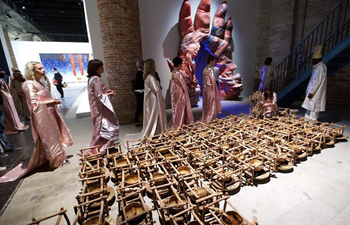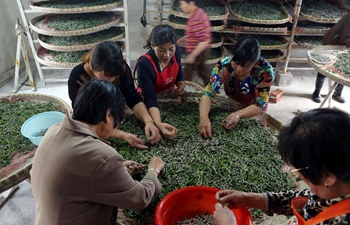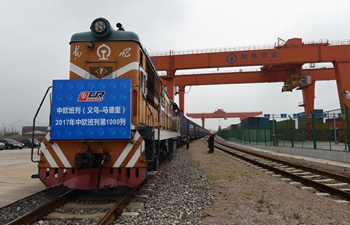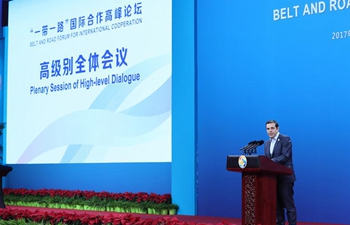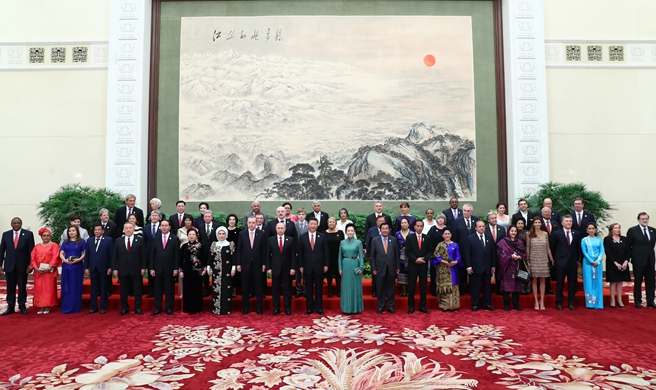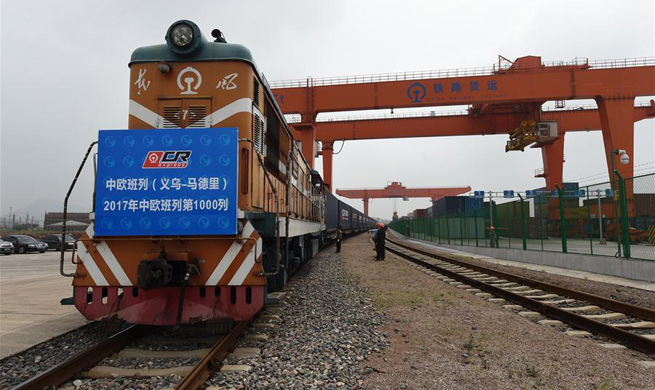SAN FRANCISCO, May 14 (Xinhua) -- A new book, by University of Washington (UW) geologist David R. Montgomery, tries to be upbeat about rebuilding Earth's soils.
The book, "Growing a Revolution: Bringing Our Soil Back to Life," is a good-news environment story compared to the author's first popular book, "Dirt," which was about how erosion undermined ancient civilizations around the world in places like modern-day Syria and Iraq.
"This new book was my attempt to ask the question: Can soil be restored at scale? On real farms, not in some little yard in Seattle. Could it be done on real, commercial farms in the developed world, as well as on subsistence farms in the developing world?" Montgomery was quoted as saying in a news release from UW.
Available this month, a decade after the first pop-science book, "Growing a Revolution" weaves a travelogue with history and science to tell of visits to farms in North and South Dakota, site of the famous Dust Bowl, as well as Ohio, Pennsylvania, Africa and Costa Rica. These farmers use technology ranging from hand-powered machetes to enormous modern no-till seeding machines.
The Dust Bowl was a period of severe dust storms that greatly damaged the ecology and agriculture of the American and Canadian prairies during the 1930s; severe drought and a failure to apply dryland farming methods to prevent wind erosion caused the phenomenon.
The success of "Dirt" brought invitations to speak at farming conferences. Along the way, Montgomery met farmers who talked about successes in restoring health to degraded soils. "I kept running into examples of farmers who had restored fertility to degraded land. So I started asking, what did you do? How long did it take? I began to recognize patterns among farmers who had been successful not just in restoring soil, but in restoring profits to their farms."
Seeing approaches that worked in very different situations, the UW professor of Earth and space sciences sought out the common ground for building fertile soil as a consequence of farming.
These farmers had moved away from tilling their fields, which chops up worms, erodes soil and disrupts beneficial microbes. Instead they focused on boosting soil health, thereby bolstering a crop's natural defenses. "It boils down to a combination of three factors: Park the plow to minimize soil disturbance; grow cover crops, including legumes to get nitrogen and carbon into the soil; and grow a diversity of crops, so that you can break up the pest and pathogen carryover problem," he said. "Those three principles -- ditch the plow, cover up, grow diversity -- were common among the farmers that had restored degraded soils and returned profitability to their farms."
He intentionally did not seek out "alternative" or "environmental" practices. The most farms he visited were not certified organic. Most farmers were motivated by economic worries and the skyrocketing costs of herbicides, pesticides and diesel. By nurturing healthier soils that can retain water, suppress pests and don't require as much fertilizer, pesticides or work of diesel-powered machines, they reduced their costly inputs by at least 50 percent and up to 90 percent.
Beyond the economic payoff for farmers, adopting these practices produces environmental benefits by reducing chemical use and sequestering carbon from the atmosphere to help counter climate change, Montgomery said.
"I think there's a big opportunity to make conventional agriculture more 'organic-ish' by adopting this suite of practices," Montgomery said. "By moving away from high-disturbance, high-input agriculture you can reap many of the benefits of soil health without necessarily going fully organic."
American soils are currently estimated to have lost about half their pre-agricultural organic matter, a key ingredient in fertile soil.





